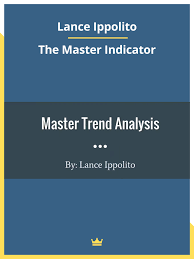🎁 Exclusive Discount Just for You!
Today only: Get 30% OFF this course. Use code MYDEAL30 at checkout. Don’t miss out!
Why I Turn to My No. 1 Trading Indicator During Times Like These
This course is available and delivery within a few hours!
File Size: 2.74 GB
Lance Ippolito – The Master Indicator

This bear market has been brutal for most folks…
While it might feel like a decade ago, I’m young enough to remember when we were hitting all-time highs in what might have been a once-in-lifetime bull run.
Even just last year, the S&P 500 hit new all-time highs 70 different times.
There are only 252 trading days in a year, so that means we hit a new all-time high once or twice a week!
The market had some good times, no doubt. But we all know what happened next…
On Jan. 4, 2022, the S&P 500 made its 71st and final record high for the foreseeable future…
Two days later, on Jan. 6, the Master Indicator started waving red flags…

You see those pink arrows pointing down? That’s the Master Indicator warning that the S&P 500 was likely to move lower.
And it wasn’t wrong… Over the next 20 days, the index fell about 12%. In total, it signaled markets were headed lower 12 different times in the first three months of the year!

If you had this indicator… and you saw those arrows pointing down… would you have played things differently?
I think it’s safe to say a lot of us would have…
It’s been a historically brutal year. Looking at data for the S&P 500 since 1951, the market tends to move higher about 54% of trading days.
But in 2022, we’re in an upside down world. Through Sept. 21, the S&P 500 has moved lower 55% of the days so far this year!
I wish I could’ve shared this indicator sooner, but putting the finishing touches on something like this takes time.
But that’s why, especially given the state of the markets right now, I just held a special, live session — at no cost — where I broke down how my Master Indicator works, and why it’s “stupid simple.”
The Master Indicator Mantra: KISS — Keep it Simple, Stupid
Trading can be as simple or complex as you want.
And by now, you should know I’m an aficionado of the KISS method — Keep It Simple, Stupid!
I don’t care what the Federal Reserve is doing or where the market is going. And I’m a big fan of avoiding complicated strategies that have too many indicators crowding my charts. That’s a good way to end up with noise, not signals.
The Master Indicator, for example, uses just a few high-quality ingredients: volume, price and average true range (ATR). And these three simple metrics have been combined in over 118 lines of code that anyone can install right into the top trading platforms.
And one of the things I love most about the Master Indicator is that it not only signals long and short trades, but also where to take potential profits or bail on a position.
It does that by using the stock’s ATR.
The ATR is exactly as it sounds… It shows you the average true range of a stock, or how much it moves in a given time period. You average how much the stock moves, the difference between the high and low in price, over more than one period to get the ATR.
Just look at the example below…
Let’s say we have three days of price data for a hypothetical stock, ABC. The table shows the high price, low price and the difference between those two prices, also known as the range.
By averaging the range over those three days — $0.80 + $0.40 + $0.30 / 3 — you get the three-day ATR: $0.50. You could average as many periods as you want using any time frame, like a daily or even five-minute chart.
I prefer to use fewer periods since I’m more concerned with how the stock has been moving very recently…
Because my Master Indicator calculates target and stop levels based on the ATR.
So when I trade with the Master Indicator, I know where to set my target and exit levels. In the chart below, you can see where it shows potential stop and target prices…

And remember, that’s just the ATR’s role in the Master Indicator!
Next week, I’ll cover how I use price and volume.
Course Features
- Lectures 0
- Quizzes 0
- Duration 10 weeks
- Skill level All levels
- Language English
- Students 120
- Assessments Yes

